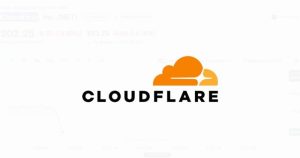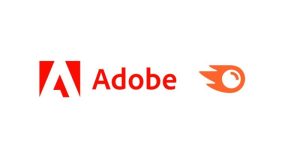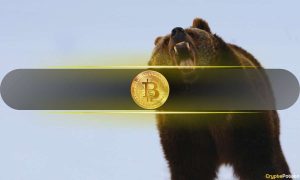DeFi Deep Dive — UMA, Cutting Middlemen Out of Derivatives Markets

Introducing the cost of lawyers and financial advisors has always represented a high barrier to entry to financial markets. With the help of smart contracts and oracles, the UMA project aims to bring that barrier down.
Unlike meme coins that are created for the sole purpose of riding the whimsical waves of social media, DeFi protocols are seeking to leave behind the enduring value. As permissionless, decentralized finance continues to evolve, it can tap into existing financial markets.
UMA represents the latest evolution of the DeFi space, creating tools to participate in the derivatives market worth over $540 trillion.
UMA explained
Standing for Universal Market Access, UMA’s mission is to cut the middleman out of the financial derivatives markets.
Based on open-source coding, the UMA protocol runs on the Ethereum blockchain to create synthetic assets. As a derivatives protocol, it tokenizes those assets in the traditional financial arena outside the blockchain space.
The UMA protocol makes this possible by providing a framework to create ERC-20 tokens. In turn, these collateralized crypto tokens track any existing derivatives asset. This way, investors can use UMA to trade in the derivatives without accessing them directly.
More importantly, UMA enables investors to do so without centralized points of failure and authority. The building blocks for trading financial contracts on Ethereum are two-fold:
Priceless financial contract templates — they create synthetic tokens, or synths, to be auto-executed based on the data feed from oracles.Decentralized oracles — used to evaluate contracts and enforce their execution.
These two components create an environment where financial contracts can be traded natively on Ethereum:
“[In traditional finance] If the contract terms are not met, then the legal system is called to arbitrage the process, which is expensive and slow. UMA allows this to happen in a DeFi native way, without the need for lawyers or any singular middle entity to control the system.”
As is the case with other DeFi protocols, the eponymous UMA token is the governance tool for the protocol. But first, let’s examine how UMA actually works.
How does the UMA protocol work?
To understand how the UMA protocol works, one has to first understand what it tries to mimic. In traditional finance, the enforcement of financial contracts is based on two components:
Margins — trading parties stake collaterals to account for the shift in derivatives’ value.Legal mechanism — arbitration and other expensive and cumbersome legal procedures if one of the trading parties fails to fulfill the contract.
In DeFi, the first component is relatively easy to materialize, thanks to smart contracts. The major stumbling block is legal enforcement, however. One that can scale up across the world among millions of pseudonymous investors. UMA protocol deals with this issue by creating a permissionless and trustless mechanism based on economic incentives.
Therefore, UMA brings down the barrier to entry into the world of financial derivatives by providing an open-source framework to develop financial contracts. They consist of five components:
Public addresses of trading parties.Margin balance auto-management.Economic parameters for contract valuation.Oracles for data verification.Settlement, terminate, re-margin, addition, and withdrawal functions.
Contracts and oracles
UMA has a series of financial contract templates that anyone can use to create derivatives tokens.
The Optimistic Oracle runs through the price request from these contracts. This acts as a way for contracts to initiate price requests. As a result, the Optimistic Oracle is called on for every price request.
This Optimistic Oracle is bolstered by the systems dispute mechanism, the Data Verification Mechanism — DVM. Should there be an issue with the price request, it is then sent to the DVM to be voted on. By comparison to the Optimistic Oracle, the DVM is not called as often by design.
UMA token stakeholders can use DVM to resolve contract disputes or add new crypto assets. More importantly, if liquidators provide wrong information, they are penalized, with DVM oracle confirming the correct collateral price.
They can even participate in UMA’s development to create consensus for UMIPs — UMA Improvement Protocols, similar to EIP for Ethereum.
Synthetic vs. Priceless synthetic tokens
As previously mentioned, synthetic tokens’ price fluctuates in relation to its reference index.
As collateralized tokens, they encompass various parameters to maintain their price — futures markets, prediction markets, and collateralized loans themselves.
Synthetic tokens can track precious metal commodities or cross-chain crypto assets. They can even be used to track the success of trading strategies from the WallStreetBets subreddit. Likewise, synthetic tokens can be employed to track the performance of other DeFi protocols, such as Uniswap.
Their application doesn’t end there. Furthermore, synthetic tokens can be used for insurance products, perpetual swaps, futures, private pension plans, yield curves, DEX market shares, etc. As a result, if there is a financial product, UMA protocol can tokenize it.
On the other hand, priceless synthetic tokens are collateralized without having an on-chain price feed. Instead, through liquidation and dispute mechanisms, the purpose of these tokens is to incentivize token sponsors (creators of synthetic tokens) to collateralize their contract positions adequately.
Thus far, UMA protocol accounts for about 50 projects with $95.45 million in total value locked (TVL). Out of that volume, investors extracted $40.97 million TVM (total value minted).
Who developed UMA?
Hart Lambur and Allison Lu are the co-developers of UMA.
Having been a Goldman Sachs bond trader with a background education in computer science from Columbia University, Lambur decided to leave the world of traditional finance and fully commit to DeFi. He developed the predecessor of UMA in 2017 via Risk Labs.
That first protocol for managing synthetic risk was a stepping stone in procuring institutional funding. Risk Labs acquired $4 million from Bain Capital and Dragonfly venture capitalists.
This may not be that surprising, since both Lambur and Lu have ties with the world’s biggest bank. Allison Lu was Goldman Sachs Vice President with an economics degree from MIT. Notably, Lu had previously worked as an advisor at One Daijo, an Ethereum P2P lending protocol.
Lu started partnered up with Lambur in 2018, including Regina Cai and other FinTech specialists. On December 3, 2018, the Oracle-based UMA protocol first saw the light of day with the release of its whitepaper. Soon after, they launched U.S. Stocks as the first UMA Mainnet project.
Is the UMA token worth a buy?
Underpinning the UMA protocol is its native governance token UMA (UMA). It was one of the first DeFi tokens to launch on Uniswap decentralized exchange. After releasing the whitepaper, Hart Lambur explained how the token works to tokenize the price of all kinds of assets in a decentralized manner.
UMA’s tokens are explicitly for voting on the DVM, making their value inherent to the participation in the protocol and community.
All UMA token holders can vote on minute changes in the protocol, along with wider upgrades. The distribution of UMA is as follows:
100 million total supply.About 62 million in circulation.2 million were sold during UMA’s ICO (initial coin offering) via Uniswap.About 35 million were distributed to users as rewards and developers.14.5 million allocated for future sales.
UMA’s current standing
UMA’s current market cap is $547.2 million, with around $22 million daily trading volume. UMA token is available for purchase on all major exchanges, such as Coinbase, Binance, OKEx, etc. Its ATH price was reached in February 2021 at ~$34, having dropped by 74% to $8.47.
As of July, MAC’s indicator pointed in the bullish direction. When it comes to rewards for holding UMA tokens, users receive 0.05% of the current UMA supply, distributed among active voters, when participating in the governance process. Otherwise, those who are in the reward system, but do not participate, receive penalties.
Any time you accurately vote on a “price request” coming from the financial contract, you gain a reward. As a result, these are proportional to how many UMA tokens were used for voting. Overall, storing UMA tokens is easy with Exodus, Atomi, or Trezor and Ledger for hardware wallets.
Based on the fact that UMA gained popularity when it first launched the ETHBTC priceless token in 2020 to track its performance, it is safe to assume that UMA is valued on its utility merit.
Therefore, the token’s value relies on how useful these novel projects will be and how widely their popularity will spread. Thus, the development team already made some grounds by launching a creative community airdrop worth $60 million among five other DeFi governance communities.
What is in store for UMA’s future?
With the Ethereum 2.0 upgrade unfolding, UMA protocol also is transitioning from proof of work (POW) to proof of stake (POS), as it is hosted on Ethereum. Because this drastically enhances scalability, the UMA team is looking forward to a new wave of adoption for synthetic tokens.
“We do see that the different scaling solutions will need to stay ahead of an innovation curve since there are a few key industry services that don’t benefit from fragmentation. Examples like DEX’s and having liquidity pools being divided are not beneficial to end-users,” explains the team.
Regarding the plague of hacks in the DeFi space, they foresee more hacks happening. However, they should be outpaced by DeFi adoption, frequent code audits, bug bounties, and growing decentralized insurance protocols.
The UMA team’s current interest is in deploying Success and Range Tokens. Success in the near future.
On the one hand, tokens make it possible for venture capital funds to invest in DAOs (Decentralized Autonomous Organizations) just as they own stock shares.
On the other hand, Range Tokens are akin to debt instruments, safeguarding the DAO from downside trends but not yielding as many gains. UMA had already raised $2.6 million with the pilot launch of the Range Token last month.
In conclusion, rarely does one see such a flexible and promising project in the DeFi space. With so many applications across the financial arena, UMA is bound to jumpstart a DeFi project that will take the space by the storm.
Disclaimer
All the information contained on our website is published in good faith and for general information purposes only. Any action the reader takes upon the information found on our website is strictly at their own risk.















